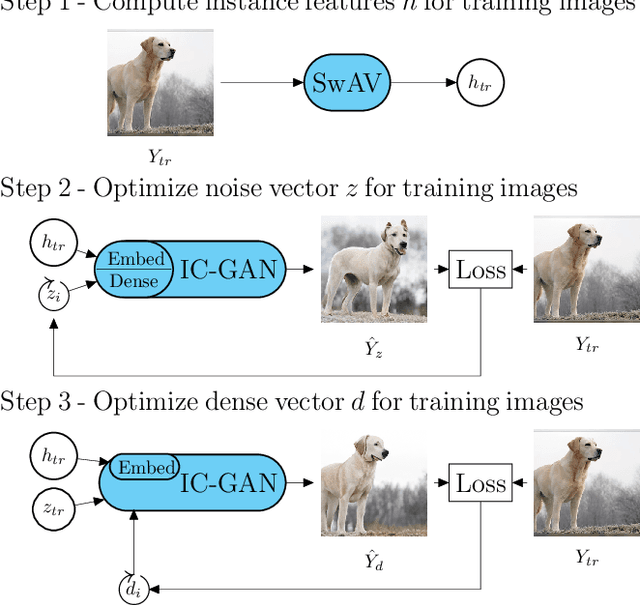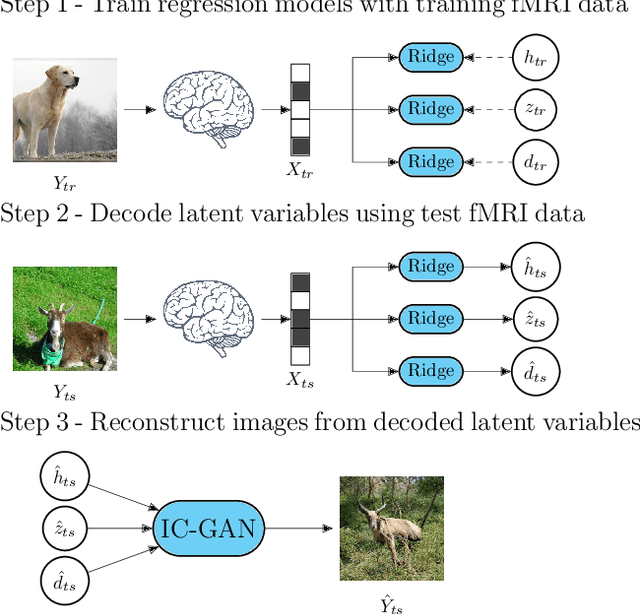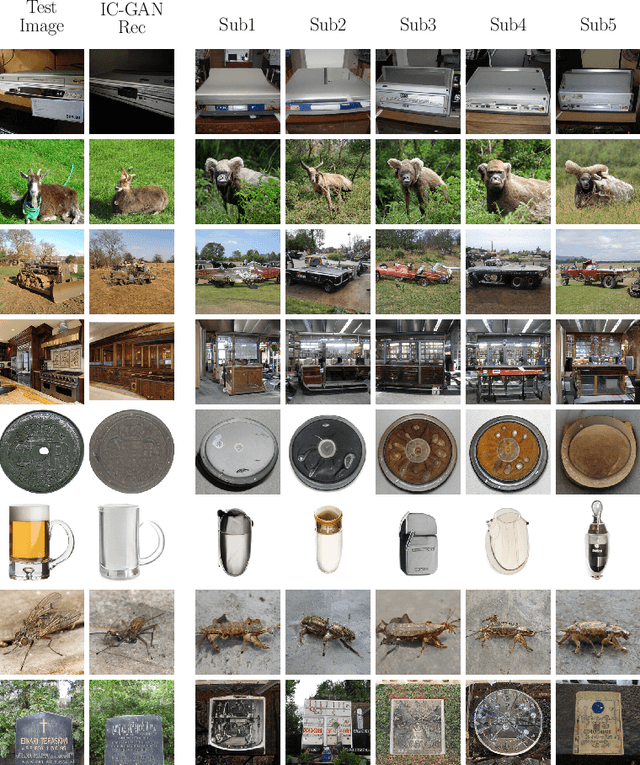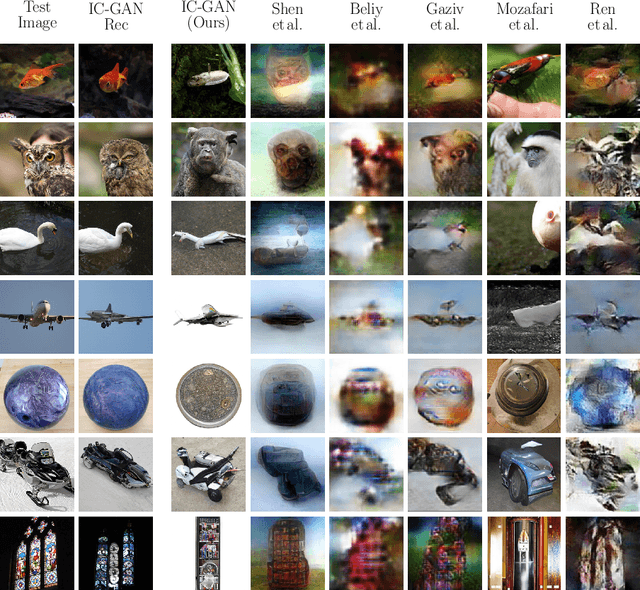Leila Reddy
Modality-Agnostic fMRI Decoding of Vision and Language
Mar 18, 2024



Abstract:Previous studies have shown that it is possible to map brain activation data of subjects viewing images onto the feature representation space of not only vision models (modality-specific decoding) but also language models (cross-modal decoding). In this work, we introduce and use a new large-scale fMRI dataset (~8,500 trials per subject) of people watching both images and text descriptions of such images. This novel dataset enables the development of modality-agnostic decoders: a single decoder that can predict which stimulus a subject is seeing, irrespective of the modality (image or text) in which the stimulus is presented. We train and evaluate such decoders to map brain signals onto stimulus representations from a large range of publicly available vision, language and multimodal (vision+language) models. Our findings reveal that (1) modality-agnostic decoders perform as well as (and sometimes even better than) modality-specific decoders (2) modality-agnostic decoders mapping brain data onto representations from unimodal models perform as well as decoders relying on multimodal representations (3) while language and low-level visual (occipital) brain regions are best at decoding text and image stimuli, respectively, high-level visual (temporal) regions perform well on both stimulus types.
Reconstruction of Perceived Images from fMRI Patterns and Semantic Brain Exploration using Instance-Conditioned GANs
Feb 25, 2022



Abstract:Reconstructing perceived natural images from fMRI signals is one of the most engaging topics of neural decoding research. Prior studies had success in reconstructing either the low-level image features or the semantic/high-level aspects, but rarely both. In this study, we utilized an Instance-Conditioned GAN (IC-GAN) model to reconstruct images from fMRI patterns with both accurate semantic attributes and preserved low-level details. The IC-GAN model takes as input a 119-dim noise vector and a 2048-dim instance feature vector extracted from a target image via a self-supervised learning model (SwAV ResNet-50); these instance features act as a conditioning for IC-GAN image generation, while the noise vector introduces variability between samples. We trained ridge regression models to predict instance features, noise vectors, and dense vectors (the output of the first dense layer of the IC-GAN generator) of stimuli from corresponding fMRI patterns. Then, we used the IC-GAN generator to reconstruct novel test images based on these fMRI-predicted variables. The generated images presented state-of-the-art results in terms of capturing the semantic attributes of the original test images while remaining relatively faithful to low-level image details. Finally, we use the learned regression model and the IC-GAN generator to systematically explore and visualize the semantic features that maximally drive each of several regions-of-interest in the human brain.
Reconstructing Natural Scenes from fMRI Patterns using BigBiGAN
Jan 31, 2020



Abstract:Decoding and reconstructing images from brain imaging data is a research area of high interest. Recent progress in deep generative neural networks has introduced new opportunities to tackle this problem. Here, we employ a recently proposed large-scale bi-directional generative adversarial network, called BigBiGAN, to decode and reconstruct natural scenes from fMRI patterns. BigBiGAN converts images into a 120-dimensional latent space which encodes class and attribute information together, and can also reconstruct images based on their latent vectors. We trained a linear mapping between fMRI data, acquired over images from 150 different categories of ImageNet, and their corresponding BigBiGAN latent vectors. Then, we applied this mapping to the fMRI activity patterns obtained from 50 new test images from 50 unseen categories in order to retrieve their latent vectors, and reconstruct the corresponding images. Pairwise image decoding from the predicted latent vectors was highly accurate (84%). Moreover, qualitative and quantitative assessments revealed that the resulting image reconstructions were visually plausible, successfully captured many attributes of the original images, and had high perceptual similarity with the original content. This method establishes a new state-of-the-art for fMRI-based natural image reconstruction, and can be flexibly updated to take into account any future improvements in generative models of natural scene images.
 Add to Chrome
Add to Chrome Add to Firefox
Add to Firefox Add to Edge
Add to Edge